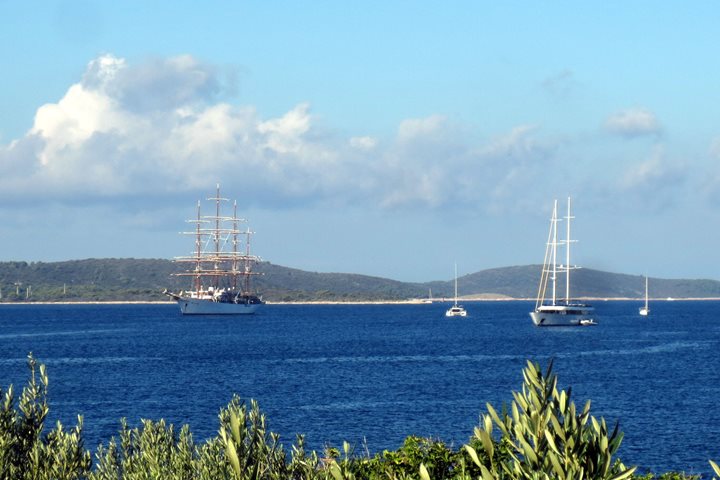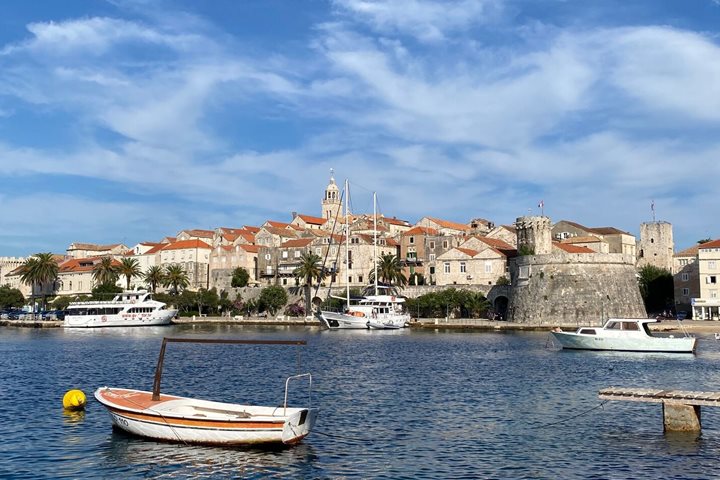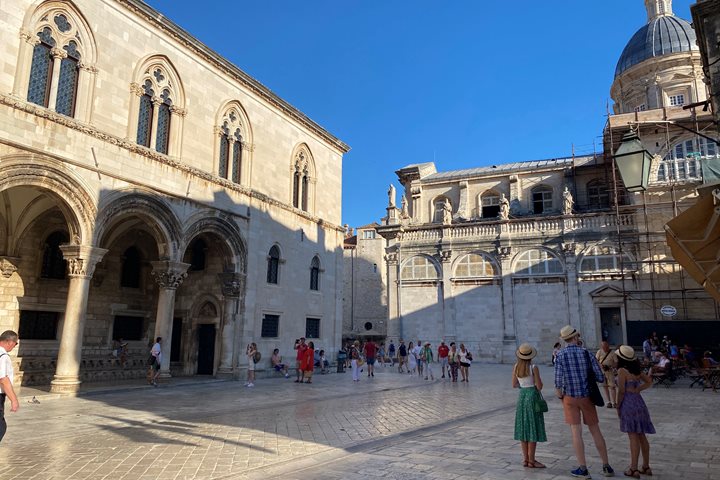After a beautiful night cruising down the Aegean Sea after boarding the legendary Sea Cloud, we awoke with Mediterranean expectations and the island of Kythera in our wake at the southern tip of the Greek Peloponnesus. But what kind of weather was this, as we rounded the corner into the Ionian Sea? Dark clouds loomed ahead and a cool headwind brought an uncharacteristic rain, as we made our way into the historic dining room and wondered if the ship would be setting sails in the rain. “It’s not a problem for the sailors to set sails in the wind or rain,” assured the expedition leader, “but it’s not a lot of fun to watch so we’ll wait until this squall passes through before gathering on the spanker deck.”
It was gone as fast as it came, and suddenly Sea Cloud was all action with lines hauling, riggers yelling, yards bracing, and sailors aloft. Chief Officer Jan Dubrowski gave a salty play-by-play commentary as the yards were raised and the sails unfurled. We then moved forward to watch the foremast team set the jibs and the huge forecourse. Later we all got to go up on the “fo’c’sle” for a close-up view of the rigging and the anchor windlasses. It was a dizzying spectacle to be on a true square-rigger with so much action everywhere that we hardly noticed that . . . the wind had completely died.
There we were under glorious full sail in the middle of the busy Kythera shipping lane, sailing at the pace of a leisurely stroll at best. We joked about the weather forecast and the expedition leader assured us optimistically that the wind would certainly come up later in the morning, and reminded us that until the invention of the steam engine and rail, square riggers were by far the fastest and most efficient way to carry cargo. We met the expedition staff, learned about photography, and settled in for lunch when the wind finally came up.
“Drop the sky sail! Drop the royals!” came the call from the bridge as the wind gusted up in front of another squall. This too passed and the sailors were hauling the same sails back up just a few minutes later to adjust to the afternoon winds. We ended up with plenty of wind in the sails for a good afternoon sailing, getting to know the ship’s officers, and discovering our favorite vantage points. Everyone was out on deck again to watch the sailors climb aloft again for the final furling at the end of the day. This was only day one, and we would never look at a square-rigger the same way again.









